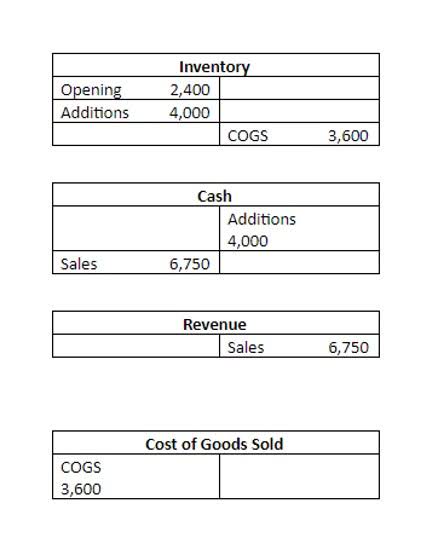
Despite its separate legal status, the subsidiary remains closely tied to the parent organization, contributing to its overall financial landscape. Maintaining the identity of distinct brands while embodying the “happiest place on earth” promise is a challenge. In addition, unique offerings across properties such as planning and reporting on retail/apparel revenue are much different than planning and reporting on worldwide box office returns. Currency translation is critical for multinational corporations operating in diverse economic environments. Converting foreign financial statements into the parent company’s reporting currency involves strategic decisions that can QuickBooks significantly impact financial results.

Consolidating Currencies
ERPs can restrict access to certain accounts based on role, geo, or entity to ensure users are limited to the relevant parts of their general ledger to simplify their reporting and prevent accidental cross-posting. Multi-entity business structures can be quite complex, which can make accounting challenging. Discover the next generation of strategies and solutions to streamline, simplify, and transform finance operations. If we open up any offices in the future, this is a system that we’ve got in place that allows us to do that, because it’s super simple to add another entity into the system, and then we’re up and running straight away. Barbara is a financial writer for Tipalti and other successful B2B businesses, including SaaS and financial companies.

Ways to Use ChatGPT for Accounting Automation and Efficiency
Additionally, it is completely integrated with the Zoho product line, which includes Zoho Inventory, Zoho CRM, and other products. QuickBooks is an affordable small business accounting programme that supports multiple entities. QuickBooks provides the on-premises QuickBooks Desktop product line and the cloud-based QuickBooks Online software. Manual accounting procedures should be automated by top-notch multi-entity accounting software.
- Multi-entity accounting software will enable you to compare the performance of each branch if you are managing a company with multiple subsidiaries or branches.
- Seek software that does accounting reporting, creates invoices, and automates journal entries.
- NetSuite offers multi-entity and multi-book accounting capabilities, which they combine with real-time data to provide a comprehensive overview of business performance.
- Multi-entity accounting software is invaluable for complex organizations that need to consolidate financial records and reporting across multiple units.
Figuring Out How to Combine Several Financial Software

Seamless integration of multi-entity accounting software with current business processes and IT infrastructure is critical for successful adoption. Addressing intercompany transactions maintains integrity and coherence in financial statements, https://www.bookstime.com/ supporting informed decision-making and regulatory compliance. In multi-entity accounting, an entity is a distinct financial and legal establishment operating within the parent organization’s structure. Each entity maintains its own financial records and legal status, providing operational autonomy while remaining interconnected within the broader corporate framework. Allocating shared costs among multiple entities requires careful consideration to ensure fairness and accuracy.

Multi-entity accounting software
- Proper implementation of MEA and keeping abreast of related new trends are the things that CPA firms and accounting companies could do to optimize their accounting processes for more desirable financial results.
- Multi-entity accounting refers to the comprehensive management of financial processes across various business units, subsidiaries, or legal entities under the umbrella of a larger parent company.
- QuickBooks accounting software connects with numerous third-party add-on software packages to provide some ERP-like features.
- You can assign budgets by location or create separate categories to prevent entities from overspending, and the app logs receipts by category or department for future review.
- Companies that use Ramp, for example, can manage team-specific budgets and cross-entity transactions on one platform, eliminating the need for manual reconciliations.
This means verifying that their individual financial management systems all adhere to the relevant accounting standards and tax codes they’re subject to, plus any unique operational requirements they may have. It’s better to take care of these configurations before trying to integrate all entities together in one system. Multi-entity reporting involves generating financial reports that consolidate data from multiple entities within an organization. This reporting process provides a comprehensive view of the organization’s overall financial performance, allowing stakeholders to make informed decisions. When business entities have picked their own accounting processes or software, there’s usually a reason. It can often be impossible to find one system that meets the needs of every entity within an organization.

Multi-entity firm arrangements can be very complicated, which makes accounting challenging at times. A parent company might conduct business with companies that use different currencies. In addition to managing currency conversions‘ implications on accounting, the accounting division must deal with fluctuating exchange rates. A parent company’s duties include global finance and accounting, as well as overseeing the businesses under its purview and preparing consolidated accounts and reports.
What Does This Have to do With Financial Management?
Prevent information overload by discussing what data the accounting department will produce and how often. These changes will streamline operations and back-office processes, including accounts receivable and accounts payable, and uncover potential cost savings. Review and document each routine process a business unit must complete monthly and yearly – and areas where automation can potentially add value. A PE-backed company CFO manages the business finds ways to maximize value, and looks for opportunities to scale.
- When evaluating the best multi-entity software for your business, the primary thing you should look for is customization.
- Corporate growth is often a combination of internal growth and external growth through M&A.
- As a result, payroll expenses, withholdings, and other ACH deposit compensation transactions may have inconsistent mapping when consolidating results.
- Their workloads can seem unmanageable, eventually leading to feelings of stress and overwhelm if they miss important deadlines or make errors.
- It’s better to take care of these configurations before trying to integrate all entities together in one system.
- Multi-entity accounting is essential for companies that manage complex organizational structures or need to maintain clear financial separation between different business units.
- For a complete financial picture, it’s important to integrate your accounting software with other financial tools that will help your business save time.
Variability in AP (Accounts Payable) and AR (Accounts Receivable) Processes
- You may access core accounting, reporting and analytics, asset management, forecasting, accounts receivable/payable, workflow and expense reports, and project accounting with Xledger cloud financial management.
- For example, a manufacturing firm with subsidiaries in multiple countries can streamline its intercompany transfers while ensuring compliance with local tax codes.
- If found non-compliant with certain tax or reporting regulations, the company could face penalties, fines, or other legal consequences.
- With integration, the accounting department doesn’t have to input or review data from manual reports.
- Some companies may use different accounting software or ERP systems, making integrating and structuring data for consolidated reporting time and resource-consuming.
The need for multi-entity accounting arises in scenarios of geographic expansion, acquisitions, or when companies diversify their operations into different business entities. This complexity grows with the addition of different currencies and regulatory standards. Multi-entity accounting integrates all your organization’s financial data into a single cohesive system.
Efficient Consolidation of Financial Data
Examples of ERPs with multi-entity functionality are NetSuite OneWorld, Microsoft Dynamics 365 Business Central, and Sage Intacct. With digital transformation from AP automation software, companies can eliminate manual data entry and paper-based systems. IDC what is multi entity accounting MarketScape vendor analysis model is designed to provide an overview of the competitive fitness of technology and suppliers in a given market.